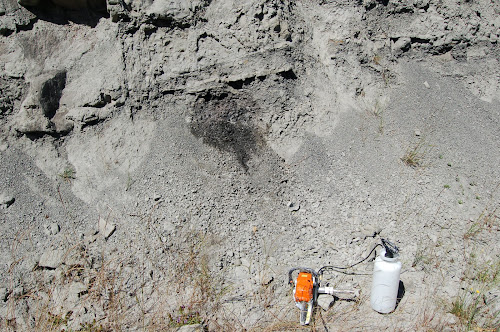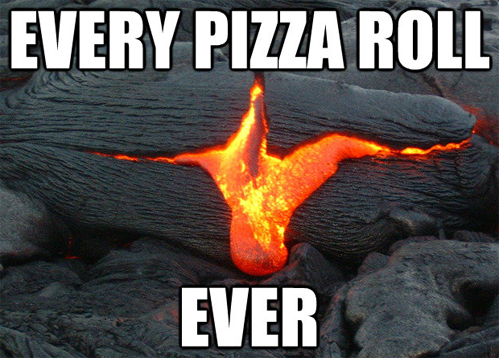Evelyn has turned her geological road signs meme into
Accretionary Wedge #58. I don't have a lot of signs photographed, though I am starting to accumulate some of roadside interpretive signs. But the following is my favorite, and a crop is featured as
the header on my Twitter profile. Driving east out of Lakeview, Oregon on Route 140, about 45 minutes out, one crosses
Guano Valley, just north of the Nevada-Oregon Border. On the first visit, one realizes with stomach-churning uneasiness that the road goes right up to an enormous cliff... then up it.
Taken during 60 mph reconnaissance geology, with
Dana Hunter at the helm, you can see the lighter stripe of the road grade climbing the side of the Basin and Range escarpment. The road is actually very well engineered, and there's more berm than you realize, but the sheer drop off and lack of a guard rail can make it feel more like you're driving up a balance beam than a two-lane road. The first trip up Doherty Grade is definitely a memorable experience. Heading into the turn at the base...
...feels a little like reaching the first crest of a big roller coaster. "Dear Lord, what have I got myself into!?" Then just after starting the grade proper, they decided to reassure nervous drivers that, yes, it could be worse. After all, you're driving up a cliff, and rocks do fall off cliffs, right?
It's not terribly obvious at this scale, but just beyond the "Rocks" sign is also what I refer to as the "pointy-headed snakes" warning (winding road).
And yes, there is a pull-out about a mile or so into this climb that I like to stop at. Fortunately, there's not much traffic on this road: it's on the inside of a curve, across oncoming traffic. I've posted
a ginormaous panorama of Doherty Rim at Flickr; right-click the image for viewing size options. Guano Valley is notable as the source of the
USGS Andesite "AGV-1" geochemistry standard, though I don't think it's available any more, and I've never been able to figure out exactly where it was collected.






























































